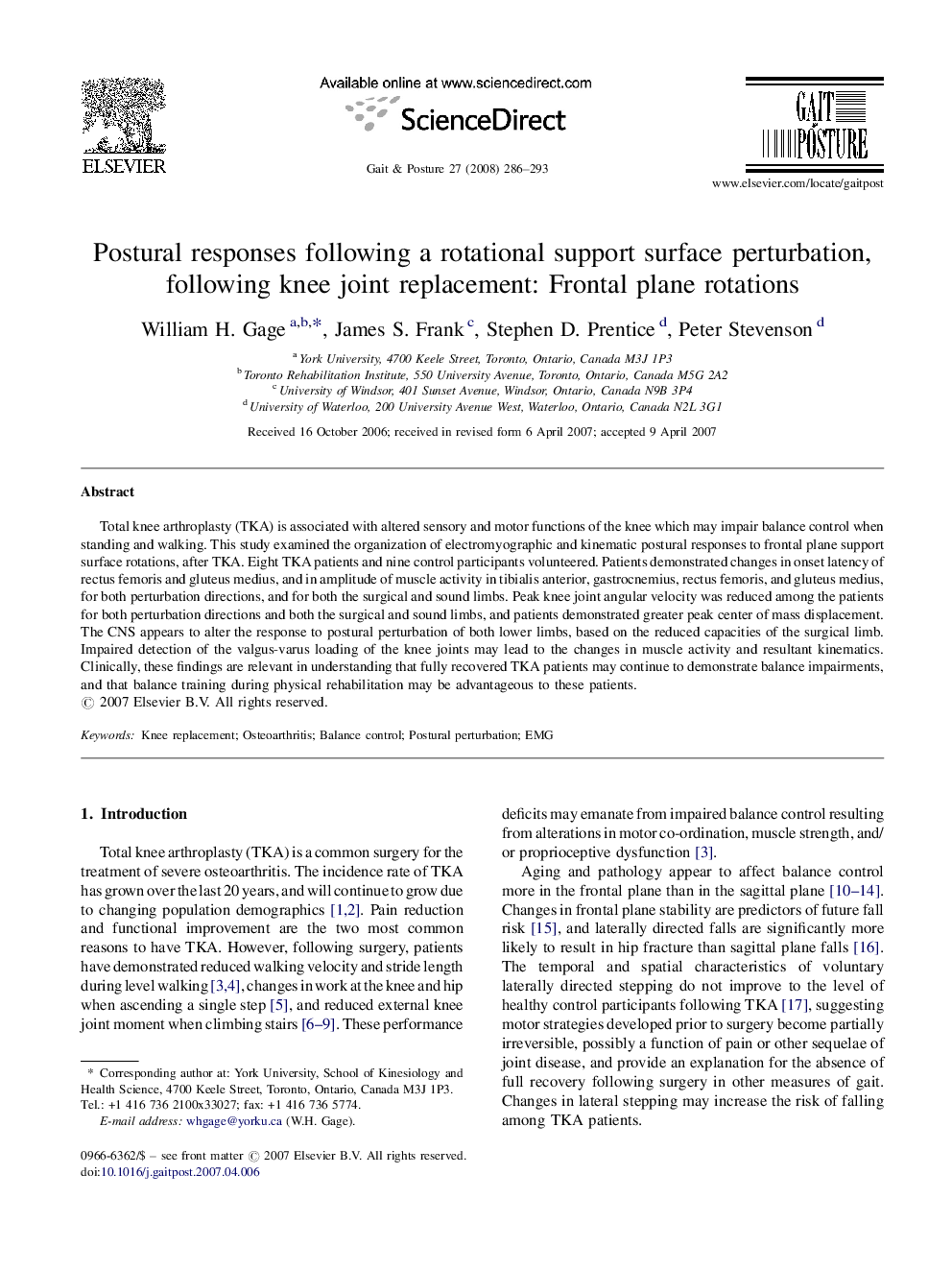| Article ID | Journal | Published Year | Pages | File Type |
|---|---|---|---|---|
| 4058373 | Gait & Posture | 2008 | 8 Pages |
Total knee arthroplasty (TKA) is associated with altered sensory and motor functions of the knee which may impair balance control when standing and walking. This study examined the organization of electromyographic and kinematic postural responses to frontal plane support surface rotations, after TKA. Eight TKA patients and nine control participants volunteered. Patients demonstrated changes in onset latency of rectus femoris and gluteus medius, and in amplitude of muscle activity in tibialis anterior, gastrocnemius, rectus femoris, and gluteus medius, for both perturbation directions, and for both the surgical and sound limbs. Peak knee joint angular velocity was reduced among the patients for both perturbation directions and both the surgical and sound limbs, and patients demonstrated greater peak center of mass displacement. The CNS appears to alter the response to postural perturbation of both lower limbs, based on the reduced capacities of the surgical limb. Impaired detection of the valgus-varus loading of the knee joints may lead to the changes in muscle activity and resultant kinematics. Clinically, these findings are relevant in understanding that fully recovered TKA patients may continue to demonstrate balance impairments, and that balance training during physical rehabilitation may be advantageous to these patients.
